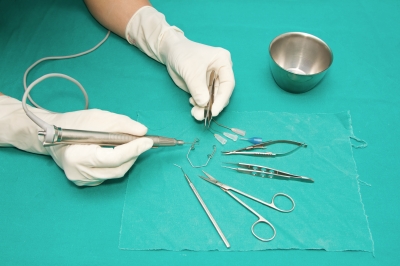In any market where there’s a demand for a particular product or service, it’s a business opportunity. When a company can meet that demand, it gains the potential to become an industry leader. In the field of manufacturing, micro molding manufacturers are meeting the need for a process to create the internal components for mobile devices such as smartphones, tablets and laptops. The micro molding industry has seen tremendous growth in the last few years and industry experts predict that it will continue to grow, with the market value expected to more than double by 2019.
Innovations in Health Care
The tech industry isn’t the only one with a steady demand for the production of micro-sized parts; hospitals and clinics throughout the country now use instruments and equipment that are smaller, more lightweight and more sophisticated than the devices of a decade ago.

Being able to treat and diagnose patients quickly and effectively are the goals of every health care specialist, yet this depends on one’s ability to gather information and draw conclusions. The miniaturization of medical equipment is now allowing innovations to take place in patient examinations and treatments. Observations that in the past would have only been possible through invasive surgery can now be accomplished by using tiny endoscopes or micro-sized cameras that can provide views of organs or internal functions. This is speeding up treatments and even reducing hospital costs, because patients don’t require lengthy stays due to avoiding complicated surgeries.
Micro Technologies at Work
The new medical advances that have come about through micro molding are having a direct impact on people’s quality of life. Researchers at Virginia Tech have designed a medicinal drug patch made from tiny micro-needles as a means of administering drugs to patients through a direct skin application. This technique is speeding up drug delivery times and minimizing side effects for those undergoing cancer surgeries. The company Endotronix, Inc. has been developing wireless sensors for monitoring blood pressure and heart rate without the need to attach wires to a person’s body. Also, a team of engineers at Stanford is in the process of creating an endoscope that will help in cancer treatments and although the device is still far from being completed, it will be able to provide information at the cellular level.
Predictions on the Industry
With the increasing evidence about micro molding’s growth in the medical field and the predictions on spending that will be taking place, it’s clear that micro molding is becoming a permanent part of the manufacturing landscape. The medical technologies based in part on the science of micro molding are providing life-improving benefits and have advanced what’s possible in the health care field. The future of the micro molding industry is poised to be an active and prosperous one, as the demand from the medical, automotive and tech industries will remain tied to micro manufacturing for the production of the materials they depend on.

